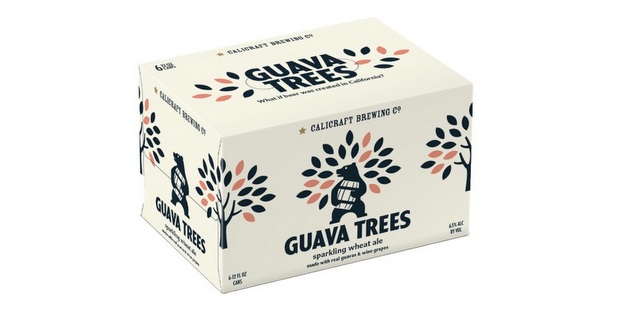When Calicraft launched in Walnut Creek, Calif., in 2012, it asked two key questions. Question No. 1: “What if beer was created in California?” Considering the influence of California breweries on the entire craft beer scene, this first question caught us off guard, but hearing Brewmaster Thomas Dang Vo explain it made perfect sense.
“What if we did not have the history of Germany and Belgium to inspire us? What kind of beverages would we make?” he said. “We don’t claim to make true California Beer, rather our goal is to make beer inspired by what is around us. The obvious inspiration is ingredients — whether that is wine country, fruit orchards or coffee roasters.”
The less obvious inspiration is from the places and faces of California. For example, Calicraft brews a beer in collaboration with Chez Panisse for its anniversary every year. This Farmhouse Ale uses herbs from its sustainable farm and is meant to pair perfectly with their spring menu. Proceeds from the beer go back to the edible schoolyard in support of urban food education.
The other question we definitely wouldn’t have asked either: “What if a wine cooler didn’t suck?” Seeing the creative paths the brewery has gone down though, it shows what we know because the answer was worth discovering.
Brewing with wine yeast

Calicraft was started by Founder and CEO Blaine Landberg, who also founded Honest Tea, an organic iced tea company. But Landberg comes from a family of homebrewers, and it has been his dream since childhood to open a brewery. So, once Honest Tea was sold to Coca Cola, Calicraft was born. The goal from the beginning was to be an innovative beverage company, creating beverages that were inspired by the ingredients, places and faces of California. In 2017, Calicraft at roughly 17,000 bbls.
The quest to reinvent — scratch that, invent — what a California is and could be, the brewery pioneered the use of wine yeast in beer, speaking at 2017 GABF and at 2018 NorCal MBAA (Master Brewers Conference) on the subject.
“Half of our taproom board has either wine yeast, grapes, fruit or oak — often with combinations of all four,” Vo said. “We also utilize some fermentation and blending techniques from wine and some aspects from cocktails as well.”
The best example is Calicraft’s Trees line of California Sparkling Ales or beers fermented with wine yeast and wine-like ingredients to come up with wine-like flavors, textures and aromas. Guava Trees drinks like a dry, balanced guava mimosa. It is incredibly fruity but finishes as dry as brut champagne but with the body of a hazy IPA. Rosé Ale is a similar concept but echoing flavors of Rosé wine. Rosé Ale uses rosé wine yeast, rosé wine grapes, cherries and raspberries, creating a beverage that is the freshness of cocktails, the complexity and flavors of wine and the drinkability of beer.
“We wanted to make the perfect crowd pleaser — for wine, beer or cocktail geeks,” Vo said. “A crowd-pleaser that could be had at brunch, at a Dolores park picnic, backyard BBQ or just chillin’ at home. We don’t make California Beer, but we make beer that speaks to the diversity and community of California.”
Even Calicraft’s extensive sour beer program does not use beer yeast, instead using wine yeast, wild wine bacteria and brettanomyces (about nine more sours from its barrel project series coming out this year). In whatever brew they try using wine yeast, Vo believes results often exceed the sum of its parts.
“By using wine yeast, wine grapes and fruit, we get a result that has more character than using just one of those three aspects alone,” he told us. “Shelf life is better since you are using multiple techniques and ingredients to create layers of flavor — rather than getting all of your flavor from one ingredient.”
This is still beer, so of course there will be haters saying “this isn’t beer!” but they are far outweighed so far by the people that try and say “wow, I have never had anything like this before” (and yes, in addition to Sparkling Ales, they do also make “real beer” with a ton of dark beers, IPAs and so on).
“What we are creating is both complex and drinkable, both innovative and familiar — this sounds like a paradox, but it is really just the blurring of different beverages,” Vo said. “We created a beverage we want to drink — it’s beerish, wineish and cocktailish. It’s fruity, dry, complex and drinkable. Why can’t a beer be both geeky and approachable at the same time?”
No need to ask anymore: approachable geek status achieved.







Leave a Reply
You must be logged in to post a comment.